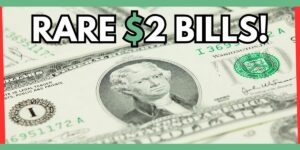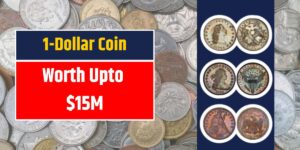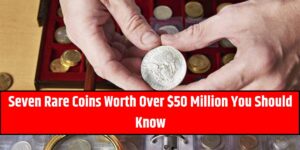Rare coins have long been a captivating subject for collectors and investors, offering a unique combination of history, scarcity, and potential for financial gain. Among the most coveted coins are the 1894-S Barber Dime and the 1916-D Mercury Dime, which have achieved legendary status in numismatic circles. These coins are not only symbols of historical significance but also valuable assets that can yield impressive returns.
Let’s delve into what makes these dimes extraordinary, their market potential, and strategies to profit from them.
The 1894-S Barber Dime: A Million-Dollar Treasure
The 1894-S Barber Dime is one of the rarest and most valuable coins in American history. Minted in San Francisco in 1894, only 24 of these coins were produced, with fewer than 10 known to exist today. Its rarity and historical context make it a cornerstone of coin collecting.
Why Is the 1894-S Barber Dime So Valuable?
- Extreme Scarcity
With just a handful remaining, the limited availability of this dime drives intense demand among collectors. - Historical Context
Minted during the economic downturn of the 1890s, these coins represent a unique period in U.S. monetary history. - Condition and Preservation
Uncirculated or well-preserved coins can fetch astronomical prices, with some auctioning for upwards of $1.9 million.
Key Investment Insights
The rarity and high demand of the 1894-S Barber Dime make it a prime target for long-term investment. Collectors often seek professional grading and authentication to ensure maximum value during resale.
The 1916-D Mercury Dime: Iconic and Rare
The 1916-D Mercury Dime, though more common than the 1894-S Barber Dime, holds immense value due to its unique design and limited mintage. Produced in Denver with the “D” mint mark, only 264,000 were struck, making it a prized possession for collectors.
Why Collectors Love the 1916-D Mercury Dime
- Elegant Design
Designed by Adolph A. Weinman, the coin features a winged Liberty head, often mistaken for the Roman god Mercury, which adds to its aesthetic appeal. - Limited Mintage
The small number produced, especially in mint condition, enhances its desirability. - Consistent High Demand
This dime is essential for completing Mercury Dime collections, ensuring its continued market interest.
Value Insights
A 1916-D Mercury Dime in pristine condition can command prices exceeding $200,000, making it a valuable addition to any collection.
How to Profit from Rare Dimes
1. Buy and Hold for Appreciation
Rare dimes like the 1894-S Barber and 1916-D Mercury have shown consistent value growth over the years. Holding them as long-term investments can yield significant financial rewards.
2. Leverage Auctions and Private Sales
Selling rare coins through reputable auctions or private collectors can maximize returns. Authentication and professional grading are essential for achieving the best price.
3. Preservation and Authentication
- Handle coins with care and store them in specialized coin holders to maintain their condition.
- Use grading services like PCGS or NGC to authenticate the coin’s legitimacy, which boosts its market appeal.
Comparative Value of Rare Dimes
| Dime Type | Year | Mint Mark | Quantity Left | Estimated Value |
|---|---|---|---|---|
| 1894-S Barber Dime | 1894 | S | Less than 10 | $1.9 million |
| 1916-D Mercury Dime | 1916 | D | A few thousand | $200,000+ |
Investing in rare coins like the 1894-S Barber Dime and 1916-D Mercury Dime offers a blend of historical fascination and lucrative potential. By understanding their market dynamics, preserving their condition, and selling them strategically, collectors and investors can capitalize on their high value. These coins not only represent pieces of history but also act as timeless financial assets
FAQs:
Why are rare dimes considered good investments?
Rare dimes, due to their historical significance and limited availability, tend to appreciate in value over time, making them attractive assets for long-term investments.
How can I ensure the authenticity of a rare coin?
Use professional grading services such as PCGS or NGC, which certify the coin’s authenticity and condition.
What factors influence the value of rare dimes?
The value depends on rarity, historical context, condition, and demand among collectors.




